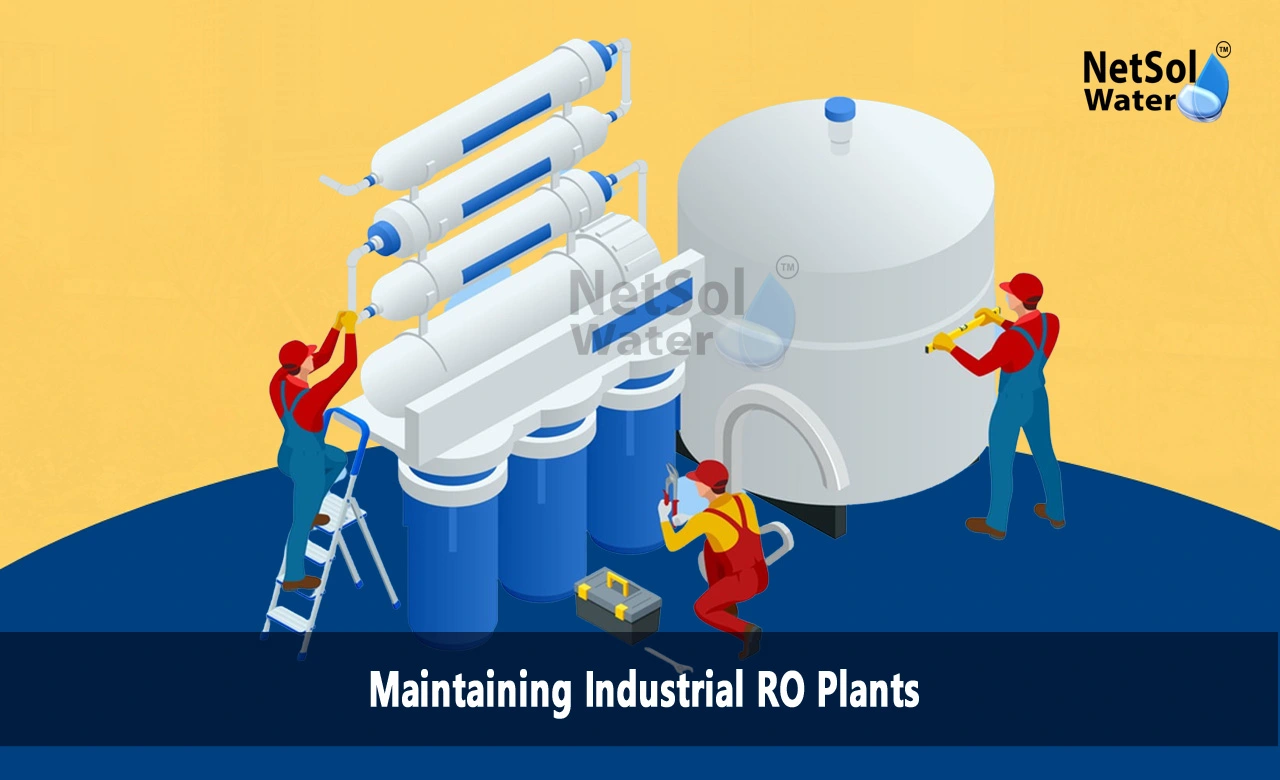How do You Maintaining Industrial RO Plants?
Reverse osmosis (RO) systems are relied upon by various industrial facilities, such as power generation, food and beverage production, and pharmaceuticals, to produce high-purity process water consistently. Whether utilizing RO for desalination, wastewater reuse, boiler feedwater preparation, or achieving ultrapure rinse water quality, these plants represent critical assets in maintaining operational reliability and product quality. However, RO plants require diligent maintenance and monitoring to sustain their performance over time. Inadequate care leads to issues like membrane fouling and scaling which degrade water quality, increase operating costs through excess energy/chemical use, and can ultimately necessitate premature membrane replacement.
We outline key elements of an effective preventive maintenance program to keep industrial RO plants running at peak efficiency for their full membrane lifetime.
Pretreatment Safeguarding
The first line of defense in protecting RO membranes is ensuring feeds meet stringent pretreatment requirements. Even flexible RO plants accepting variable water sources must maintain tight influent specifications. Critical pretreatment monitoring includes:
• Silt Density Index (SDI) testing of particulate/colloidal fouling potential
• Analysis of scaling ion concentrations like calcium, barium, strontium
• Biological activity measuring to gauge micro-fouling propensity
• Testing for oxidants, metal ions, silica, and other membrane foulants/oxidizers
Making pretreatment adjustments based on this data heads off fouling and scaling at the front end. Optimized pretreatment maximizes running times between RO membrane cleanings.
Normalization for Fouling/Scaling Detection
Even with robust pretreatment, some membrane fouling inevitably occurs over time. To identify emerging issues before water quality deteriorates, RO plants rely on data normalization:
• Temperature correction of flows and conductivities to standard conditions
• Calculation of normalized permeate flow, differential pressure, and salt passage
• Tracking permeability, salt rejection versus baseline measurements
• Comparison to fouling monitor software models or calculated limits
Significant deviations from normalized performance trigger enhanced monitoring and reveal the optimal window for cleaning cycles before water quality falls out of spec.
Cleaning Procedures and Regimes
Based on normalization trends, RO plants execute periodic cleaning regimes including:
Low-Fouling Duty: Every 3-6 months
• Alkaline cleaner for organic/particulate/biofilm removal
• Acid cleaner to dissolve mineral scales (calcium carbonate, etc.)
Medium Fouling: Every 1-3 months
• Heated alkaline cleaning
• Double acid cleaning stages
• Possible biocide soak
High Fouling: Every 1-2 weeks
• Hot alkaline soaks up to 8-12 hours
• Circulation of chelating agents
• High pH, heated acid cleaning
• Biocide application
Following proven cleaning sequences is critical. Improperly executed protocols risk damaging membranes through oxidation or precipitation. Conservative acid/alkaline exposure times, temperatures, and concentration levels should be followed based on membrane manufacturer guidance.
Membrane Replacement Planning
Despite diligent preventive maintenance routines, RO membranes eventually reach their end-of-life failing to sustain adequate water quality. Monitoring these key indicators signals membrane replacement:
• Continually declining normalized permeate flow rates
• Rising salt passage percentages despite repeated cleanings
• Increase in pressure drop across membranes
• Visual inspection showing heavy fouling or damage during dismantling
RO plants should plan replacements during routine outages or low-demand periods. Strategic staggered swapping allows continued production capacity. Tracking individual membrane life also optimizes maintenance budgets.
Chemical Handling and Safety Practices
Given the hazardous nature of many RO cleaning chemicals like pH buffers, biocides, and oxidants, proper handling protocols are mandatory:
• Maintaining up-to-date chemical MSDS documentation on-site
• Using appropriate PPE including goggles, gloves, aprons for operators
• Dedicated chemical storage areas with secondary containment/ventilation
• Respiratory protection and safety shower/eye wash as needed
• Procedures for neutralizing spent cleaning solutions before discharge
Investing in engineering controls like chemical distribution units and spill containment also enhances safety while simplifying cleaning processes.
Post-Treatment Quality Assurance
Following the RO plants, monitoring and verification of permeate quality standards is equally crucial before distribution:
• Continuous conductivity monitoring/alarms on product lines
• Regular microbial testing and total chlorine analysis
• Tracking parameters like total organic carbon (TOC) and silica
• Periodically checking for trace contaminants and metal ion levels
• Membrane integrity testing to confirm absolute molecular removal
• Adjusting calcite, CO2 or chlorine dosing for mineral stabilization
Maintaining comprehensive post-treatment data logging provides proof of delivered water quality for internal quality control or regulatory bodies.
Advanced Digital Support Tools
Forward-thinking industrial RO plants are now leveraging digital tools and automation to streamline maintenance:
• Computerized maintenance management software (CMMS) programs
• Integration of solid-state IQ sensors into piping/vessels
• Artificial intelligence using performance data to predict maintenance needs
• Automation of chemical dosing and cleaning regimes
• Predictive membrane life modelling and automated ordering
These emerging tech platforms help optimize labour hours, chemical consumption, and parts inventory while maximizing reliability.
Conclusion
For industrial operations where continuous pure water supply is mission-critical, properly maintaining RO plants cannot be overlooked. Effective pretreatment, diligent performance monitoring and cleaning regimes based on data normalization, strategic membrane replacement planning, robust safety practices, stringent post-treatment quality verification, and digital integration together enable years of reliable operation per membrane life cycle.
While RO systems require maintenance discipline, the payoffs in water quality consistency, operating cost control, production uptime, and asset reliability are immense. Partnering with experienced RO maintenance professionals is advisable to implement comprehensive programs custom-tailored to each facility. With a proactive approach, industrial RO plants can sustain uninterrupted pure water flows meeting the most stringent contamination specifications year after year.
To explore customised commercial RO plants, Industrial RO plants, ETP or STP solutions for your needs in your areas and nearby regions, contact Netsol Water at:
Phone: +91-965-060-8473, Email: enquiry@netsolwater.com



